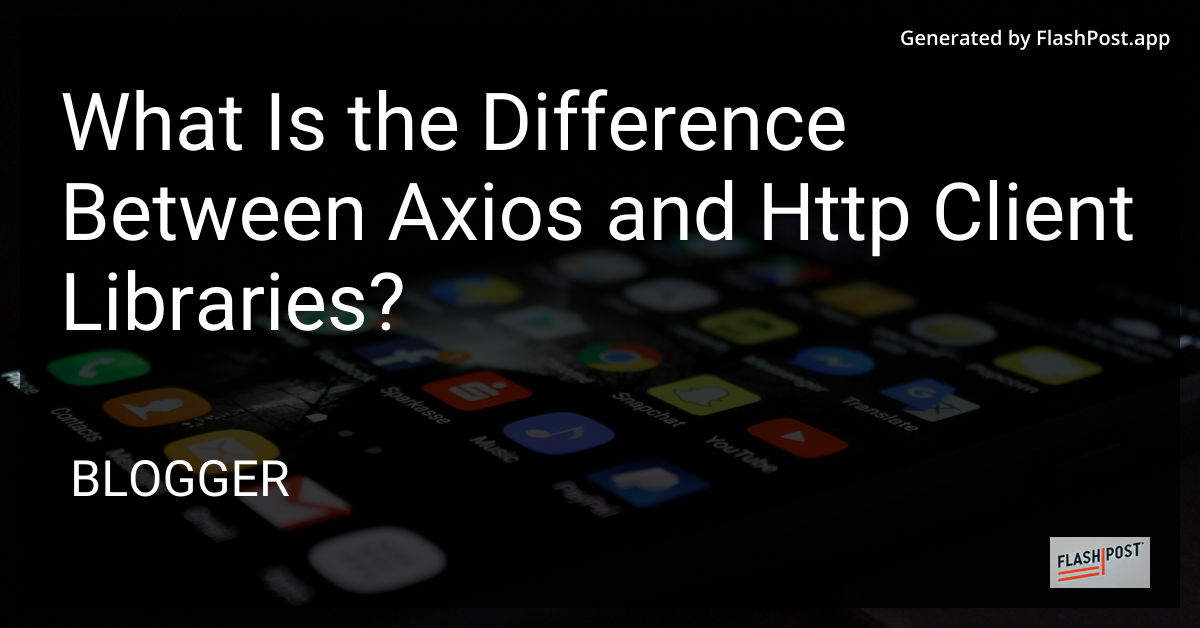What Is the Difference Between Axios and Http Client Libraries?

Understanding the Difference Between Axios and HTTP Client Libraries
As web development continues to evolve, developers consistently seek tools that enhance efficiency and streamline the development process. Two such tools that have gained significant popularity in handling HTTP requests in JavaScript are Axios and generic HTTP client libraries. In this article, we’ll delve into the differences between these two, highlighting their features and best use cases.
What is Axios?
Axios is a promise-based HTTP client for the browser and Node.js. It’s designed to make it easier to send asynchronous HTTP requests to REST endpoints and perform CRUD operations. Axios simplifies the process of performing network requests by providing:
- Automatic JSON transformation – Axios automatically transforms the JSON data returned by the server.
- Intercept Request and Response – You can intercept requests or responses before they are handled by
.thenor.catch. - Cancel Requests – Axios allows cancellation of requests using the CancelToken API.
- Timeouts – You can set a timeout limit for requests, ensuring that operations don’t linger indefinitely.
- CSRF Protection – This library automatically attaches CSRF tokens as headers based on a cookie.
What are HTTP Client Libraries?
HTTP client libraries like the native fetch API are tools used to make HTTP requests. These libraries provide the ability to send network requests similar to Axios but with different usability and feature sets. For instance, the fetch API is:
- Built-in – Available natively in modern browsers without the need for installation.
- Promise-based – Like Axios, it uses promises to handle asynchronous operations.
- Customizable – Offers flexibility in handling the response of HTTP requests and manually parsing response data.
Key Differences Between Axios and HTTP Client Libraries
Ease of Use: Axios is easier to use out-of-the-box for common tasks, especially for beginners. Its syntax is concise and more readable compared to some custom client libraries which might require more configuration.
JSON Handling: Axios automatically parses JSON data, whereas with
fetch, you need to call.json()on the response object explicitly.Browser Compatibility: Axios supports older browsers while
fetchmight require polyfills to support versions like IE11 and below.Response Interception and Error Handling: Axios provides built-in response interception and error handling, enabling developers to manage request behaviors more easily, while the
fetchAPI necessitates more manual effort.Additional Features: With Axios, features such as request cancellation and timeout setting are straightforward, whereas with
fetchand other generic libraries, implementing these features requires more complex code.
When to Use Which?
Axios: If you need a robust library with features out-of-the-box that deals with HTTP requests comprehensively, Axios is the way to go. It’s beneficial for large-scale applications that require detailed HTTP operations.
HTTP Client Libraries: If your application is simple, or if you prefer using native browser features with potentially greater flexibility, then using the
fetchAPI or similar libraries might suffice.
In conclusion, understanding the strengths and limitations of both Axios and traditional HTTP client libraries is crucial in making an informed decision. Whether you’re retrieving variables from URLs using JavaScript, conducting JavaScript testing within RSpec Capybara, or formatting dates in JavaScript, choosing the right tool for HTTP requests can significantly impact your development efficiency and code quality.
Comments
Post a Comment